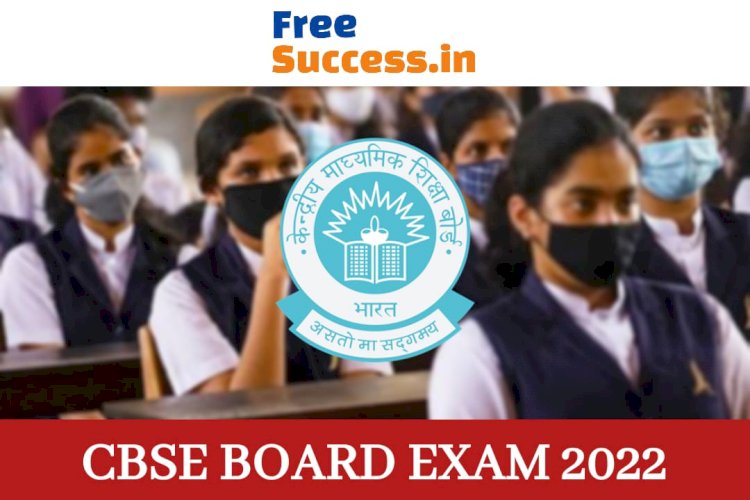CBSE Board Most Important Questions for Class 12 Physics with Solutions - FreeSuccess.in

Chapterwise Important Questions for CBSE Class 12 Physics
Chapter 1 - Electric Charges and Fields
Chapter 2 - Electrostatic Potential and Capacitance
Chapter 3 - Current Electricity
Chapter 4 - Moving Charges and Magnetism
Chapter 5 - Magnetism And Matter
Chapter 6 - Electromagnetic Induction
Chapter 7 - Alternating Current
Chapter 8 - Electromagnetic Waves
Chapter 9 - Ray Optics and Optical Instruments
Chapter 11 - Dual Nature of Radiation and Matter
Chapter 14 - Semiconductor Electronic: Material, Devices And Simple Circuits
Chapter 15 - Communication Systems
Important Questions for Class 12 Physics CBSE Board
Sessions in school do not generally cover all the important questions that students should concentrate on while preparing for their board exams. A comprehensive Physics important questions Class 12 would work as a ready reckoner to students to be well prepared for their examinations. Without a direction, students could easily lose focus if they do not have a standard format to follow which could lead to a significant dip in their grades. Vedantu presents important questions for CBSE class 12 physics with answers as a guide for students to follow in Physics. Practising the given from the important questions for Class 12 Physics chapter wise free PDF download would help students leverage their core areas and provide an avenue to score additional marks in the exams.
CBSE Class 12 Physics Chapter wise Previous Year Questions With Solutions
The following chapters mentioned below are the most important chapters for CBSE Class 12 :
Physics:
|
1 |
Optics |
|
2 |
Electronic Devices |
|
3 |
Communication Systems |
|
4 |
Atoms and Nuclei |
|
5 |
Electrostatics |
|
6 |
Dual Nature of Matter |
|
7 |
Magnetism |
Optics:
Electromagnetic radiation sums up to this region of the spectrum between the wavelength of 400 nm to 750 nm is called light. There are two things that we can inherently mention light from common experience. Initially, it travels with enormous speed and second, that it travels in a straight line. The path through which light travels is called a ray of light and a bundle of such rays forms a beam of light. Also, the light energy is concentrated in tiny particles which are known as corpuscles. The laws of reflection and refraction are true for all surfaces and pairs of media at the point of the incidence. In this chapter, you will understand the concepts of refraction and reflection in a detailed way.
Ray optics will deal with one of the most important principles in the area of ray optics. The corpuscular model predicted that if the ray of light is bent towards the normal then the speed of light will be greater in the second medium. Waves from one point of source spread out in all directions, while the light was seen to travel along with narrow rays. It will require the insight and experiment of Huygens, Young and Fresnel to analyze how a wave theory will explain all aspects of the behaviour of light. In this chapter, you will come to know the Huygens principle clearly and derive the laws of reflection and refraction along with the phenomenon of interference which is based on the principle of superposition.
Electronic Devices:
Devices in which a controlled flow of electrons could be collected are known as the basic building blocks of all the electronic circuits. Before the discovery of transistors in 1948, such devices are also known as vacuum tubes, had two electrodes namely anode and cathode. In a vacuum tube, the electrons are produced by a heated cathode and the controlling flow of these electrons in a vacuum is obtained by varying the voltage between different electrodes. The vacuum is required in the inter-electrode space otherwise, the moving electrons may lose their energy on collision with the air molecules in their path. In such devices, the electrons could flow only from cathode to anode. The seed of the production of modern solid-state semiconductor electronics went back to 1930s where it was finally understood that some solid-state semiconductors and their junctions present in the possibility of controlling the number and the direction of flow of charge carrying through them.
Communication Systems:
The transmitter will be located in one place, the receiver is located at some other place in communication systems (far or near) which are separate from the transmitter and the channel is the physical medium that gets connected. Subject to the type of communication system, a channel could be in the form of wires or cables connecting with the transmitter and the receiver or it could be wireless also. The transmitters are meant for converting the message signal. In this chapter, students will learn about Communication Systems in detail.
Atoms and Nuclei:
J.J Thomson proposed the first atom model in 1898. According to this model, the positive charge of the atom is spread throughout the volume of the atom uniformly and the negatively charged electrons are embedded in it like seeds in a watermelon. This model was picturesquely called the plum pudding model of the atom. Another such model is Rutherford’s model. Both the Thomson’s as well as Rutherford’s models constitute an unstable system. Another such model is Bohr’s model where the orbital picture of the hydrogen atom was inconsistent along with the uncertainty principle. It was replaced by modern quantum mechanics in which Bohr’s orbits are regions where the electron may be found with a large probability.
Does the nucleus have a structure, just like an atom does? If so, what will be the constituents of the nucleus? Chadwick was awarded the Nobel Prize in Physics for his discovery of the neutron in 1935. Whereas, Rutherford was the engineer who put forward the existence of the atomic nucleus. In this chapter, you will gain in-depth knowledge of the Nucleus. The mass of a neutron is now known to a high degree of accuracy and is expected to be equal to the total mass of its individual protons and neutrons.
Electrostatics:
The concept of potential energy is not a new concept to you. When an external force acts on a body against the gravitational force or spring, the work done during that moment is stored as the potential energy of the body. From this chapter, you will get an idea of concepts such as electrostatic force between charges, capacitor, electric field, torque, etc.
Dual Nature of Matter:
Through this chapter, you will realise the photoelectric effect in detail. The minimum energy needed by an electron to come out from a metal surface is known as the work function of the metal. The photoelectric effect includes the conversion of light energy into electrical energy. It follows the law of conservation of energy. The photoelectric emission is an immediate process and possesses certain special features in it.
Magnetism:
Fundamentally, electrostatic field lines basically start at a positive charge and end at a negative charge or fade at infinity. Magnetic field lines always form a closed loop. This chapter will help you understand the laws of obeying electricity and magnetism. Also, you will see how the forces are exerted by the magnetic field on moving charged particles like electrons, protons, and current-carrying wires.
Chapter Wise Weightage Strategy
The strategy to score well in CBSE Class 12 Physics are tabulated below:
- Students who are weaker in Mathematics should first try to read Modern Physics. The Semiconductor is one of the most important chapters as the weight-age is around 8 marks. Atom and Nuclei together constitute 6 marks.
- The next set of chapters will carry a Dual Nature of Radiation which carries 4 marks. Communication system constitutes around 3 marks. Having a good command over these chapters will help students a great deal in scoring higher marks in Physics.
- Now you need to start with the important and difficult chapters like Optics which carries 14 marks in the board exam.
- In Optics, you have to complete Ray optics first, which is easier to study. In Wave Optics, you have to concentrate more on problems related to Interference, Diffraction, and Young’s double slit experiment.
- Current and Electricity is also an easy chapter and it carries 7 marks.
- If any student has not started studying Electrostatics and Magnetism till now then it is better to leave these chapters as these two units consume more time than the other chapters. However, these two chapters are very important for competitive exams.
- EMI is another chapter which you need to focus on to score well. It is an important chapter for both the exam boards and competitive exams.
- You have to practice the ray diagram and other important diagrams carefully. Drawing and studying simultaneously will help you understand many topics faster and in an easier way.
- Try to solve objective type questions to make yourself efficient in solving 1 mark questions in the exam; this will be a plus for you












